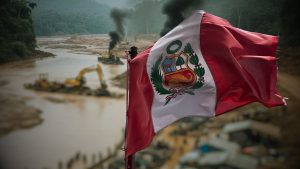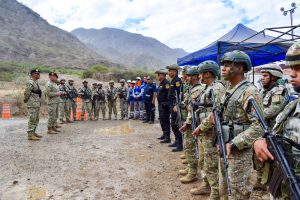Alba Vega Tapia y Jesús Díez Alcalde [1]
Summary
In recent years, jihadist actions in Mozambique have evolved rapidly and dramatically, showing an escalation of attacks, violence and brutality that has no signs of improving. Deep social discontent, feelings of frustration and lack of expectations have become the perfect breeding ground for this jihadist movement to take root, causing an unprecedented humanitarian crisis in one of the most impoverished regions of Africa and demonstrating the rapid spread of jihadism in Africa. International cooperation has begun to deploy military missions in Mozambique; however, the security measures will not be enough to end this international threat that has settled in the north of the country. In this context, it is necessary for the national government to implement actions and programs to end underdevelopment and the social frustration that suffocates the local population. Otherwise, the aggravation of the needs and suffering of the population will stimulate the spread of jihadism not only in Mozambique but throughout the region, making its final eradication more complicated.
Key Words: Jihadism, Mozambique, Al-Shabaab, international cooperation.
Introduction
In 2017, after its first attack in Mocimboa da Praia, jihadism became visible in Mozambique; however, its origins go back many years. Around the year 2000, a group of young people – many of them with external influence having attended higher studies in African and Gulf countries – separated from the Islamic Council of Mozambique (CISLAMO) to form the fundamentalist sect Ansar al Sunna, also known as Al Sunnah wa Jama’ah (ASWJ) or, locally and colloquially, as Al-Shabaab (“the youths”, in Arabic language), which has no recognized connection to its Somali namesake.
Since its formation, the group has managed to quickly attract a good number of followers due to the articulation of a strongly anti-state discourse, the promise of a better life, as well as the granting of credits and jobs for the militants and their families, among other perks[2]. Likewise, since 2017, the group began forced recruitment, mainly of women and children.
In this context, for decades, the northern province of Cabo Delgado has met the propitious conditions for the germination and propagation of extremist ideology, due to the confluence of a series of factors such as the extremely high levels of poverty, the low life expectancy , traditional ethnic-religious tensions and a deep-rooted feeling of marginalization of Muslim ethnic groups[3] . Additionally, widespread corruption and the illicit economy have turned Cabo Delgado into a regional hub for the smuggling of migrants, timber, precious stones and ivory, which has fostered the establishment of extensive and diffuse national and transnational criminal networks[4].
The jihadist terror campaign in northern Mozambique
On October 5, 2017, around thirty armed men attacked various police stations in Mocimboa da Praia, the focal point of the origin of ASWJ. This armed attack was the first attributed to ASWJ, marking the beginning of its violent jihadist action. Since then, the jihadist militia has exponentially increased both the geographical range of action, as well as the frequency and impact of its attacks, as well as the sophistication, complexity, coordination and cruelty of the same. This has been demonstrated in its main violent actions, such as the attack in Mocimboa da Praia, in August 2020, or the one perpetrated in Palma, in March 2021, the latter located a few kilometers from the facilities of the gas project led by the French company Total. It is estimated that since the beginning of the terrorist activity in 2017, Mozambique’s Al Shabaab has caused more than 2,600 fatalities and more than 700,000 internally displaced persons[5].

Figure 1: Humanitarian situation. Own elaboration
In addition to the inland attacks, the maritime dimension in which ASWJ operates is another determining factor in the jihadist strategy in Mozambique. Since March 2020, the group has demonstrated increasing control of maritime space to attack its targets[6].

Figure 2: Jihadist attacks in the province of Cabo Delgado. Source: DSN
The Al Shabaab / ASWJ network
Regarding its structure, the jihadist organization would be led by a “Supreme Council”, as the highest body in charge of making decisions regarding armed strategy and ideological issues. Its members include foreign militiamen with experience in terrorist activities and clashes with state security forces. On the other hand, the militia is organized into cells that, although subordinate to the Council, are autonomous to make logistical decisions and on the consummation of attacks and attacks[7].
As the threat spread in Mozambique, in May 2018, the first signs of its link with Daesh[8] emerged. However, it was not until June 2019 when Daesh officially claimed responsibility for its first attack in Mozambique. From that moment on, this group claimed responsibility for various violent actions; However, the exact relationship of ASWJ with Daesh, as well as with the rest of the structures of the self-proclaimed Province of the Islamic State in Central Africa (ISCAP), remains very imprecise.
Government strategy to fight jihadism
Initially, the government reaction to the ASWJ threat was questioned, considering it late, weak and without cohesion, which connects with the lack of coordination within the ruling Mozambique Liberation Front (FRELIMO) party, which governs the country. since its independence in 1975. The turbulent political scene – still marked by a long civil war (1977-1992) and recurrent violence in the north of the country – is compounded by the low preparation and precarious equipment of the Defense and Security Forces (FDS) deployed on the ground. , especially from the Mozambican Defense Armed Forces (FADM). Many soldiers have barely any combat experience and come from the south of the country, which is why a large number are unaware of the social customs and the language of the area, which – generally – causes the total rejection of the local population and makes it difficult to fight against the henchmen of Al Shabaab.[9]
International response to the jihadist threat
Since its emergence in Mozambique, the risk of jihadist violence spreading beyond the Cabo Delgado province, both to the neighboring provinces and to the entire southern African region, has grown. The international dimension of the terrorist group ASWJ has been manifest, as foreign extremists have been identified at the top of the organization, as well as in training camps and in funding channels, even before their alleged connection to Daesh was disclosed. These evidences have motivated the involvement of the Southern African Development Community (SADC)[10], a regional organization that groups 16 countries, as well as the involvement of countries such as Rwanda, Portugal (a former colonial power and an ally of Mozambique) and the United States. United, and the direct participation of the European Union to try to solve the problem that arises in this region of Africa.
As part of its fundamental objective of ensuring peace, security and good governance throughout the region, in July 2021, SADC deployed a Reserve Force in Mozambique of approximately 3,000 soldiers. Since then, this Force has supported the Mozambican military and security agents in the fight against terrorism in the province of Cabo Delgado.
As part of its fundamental objective of ensuring peace, security and good governance throughout the region, in July 2021, SADC deployed a Reserve Force in Mozambique of approximately 3,000 soldiers. Since then, this Force has supported the Mozambican military and security agents in the fight against terrorism in the province of Cabo Delgado. In this regard, the president of the SADC, Cyril Ramaphosa, on the occasion of the renewal of this regional mission on October 6, indicated that progress has been made and, as a region, it has contributed significantly to guaranteeing peace. and security in Mozambique; however, he pointed out that there is still more ground to cover[11]. To date, control of major cities has been regained, but the jihadists remain crouched among a frightened local population.
Also, in July this year, Rwanda sent more than 1,000 soldiers; however, according to the Rwandan president’s statements, this number has risen to 2,000 soldiers[12]. Although its participation has been highly questioned for not being a member country of the SADC, its support has been decisive in recovering the city of Mocimboa da Praia, which was in the hands of the jihadist rebels since August 2020. For its part, Portugal it has deployed 60 soldiers to train national special units; while, in September of this year, the United States concluded the second period of training to improve the capacities of Mozambican commandos in the fight against terrorism and the prevention of violent extremism[13].
Finally, on October 15, the Council of the European Union agreed to launch a European Union Military Training Mission in Mozambique (EUTM Mozambique) that began its deployment in the country on November 3 and which hopes to reach its full capacity operational in mid-December 2021[14]. This mission, led by a Portuguese general and with an initial mandate of two years, will have about 140 European military personnel distributed in two training centers (one for training special commands and the other for sailors) and it will not intervene in military operations (non-executive mission).
By way of conclusion: a comprehensive response to jihadism
Jihadist violence in Mozambique has evolved rapidly and dramatically since the first Mocimboa da Praia attack in 2017, with an escalation of attacks, violence and brutality that has no signs of giving in. The deep social discontent, the feeling of frustration and the lack of expectations have become the perfect breeding ground for this jihadist movement to take root, which, until now, has caused an unprecedented humanitarian crisis in the province of Cabo Delgado, one of the poorest regions of Africa, and has highlighted the rapid spread of jihadism in Africa.
International cooperation has begun to unfold in Mozambique; But the measures in the field of security will be meager to face alone this international threat that has settled in the north of the country. As in other settings both inside and outside Africa, it is necessary for the national government to implement actions and programs to end underdevelopment and the social frustration that suffocates the local population. Otherwise, the aggravation of the needs and the suffering of the population will stimulate the spread of jihadism not only in Mozambique but throughout the region, making its final eradication even more complicated.
Final Notes
- This analysis —which includes the current situation in the country— is based on the document “Mozambique: the jihadist threat spreads in southern Africa” (Authors: Alba Vega Tapia and Jesús Díez Alcalde), published in the Spanish Institute of Strategic Studies in May 2021, see https://www.ieee.es/publicaciones-new/documentos-de-opinion/2021/DIEEEO52_2021_ALBVEG_Mozambique.html. ↑
- Saide Habibe, Salvador Forquilha y Joâo Pereira, Radicalização Islâmicano Norte de Moçambique O Caso de Mocímboa da Praia (Maputo: Instituto de Estudos Sociais e Económicos, September, 2019), https://www.iese.ac.mz/wp-content/uploads/2019/09/cadernos_17.pdf ↑
- Eric Morier-Genoud, “A Insurgência Jihadi em Moçambique: Origens, Natureza e Início,” Instituto de Estudos Sociais e Económicos (march 10, 2021), https://www.iese.ac.mz/cadernos-iese-no-21-emg/ ↑
- Simone Haysom, Where crime compounds conflict: Understanding northernMozambique’s vulnerabilities (Ginebra: Global Initiative Against Transnational Organized Crime, October, 2018), https://globalinitiative.net/wp-content/uploads/2018/10/TGIATOC-North-Mozambique-Report-WEB.pdf ↑
- “Mozambique: Cabo Delgado Emergency Situation, Flash Update #3,” Reliefweb (april 9, 2021), https://reliefweb.int/report/mozambique/mozambique-cabo-delgado-emergency-situation-flash-update-3-9-april-2021 ↑
- Tyler Lycan y Lexie Van Buskirk, What we know about maritime environmental crime (Stableseas, One earth future y Safesaes, July, 2021), https://www.stableseas.org/post/what-we-know-about-maritime-environmental-crime ↑
- Sunguta West, “Ansar al-Sunna: A New Militant Islamist Group Emerges in Mozambique,” The Jamestown Foundation (June 14, 2018), https://jamestown.org/program/ansar-al-sunna-a-new-militant-islamist-group-emerges-in-mozambique/ ↑
- Ibíd. ↑
- Abdisaid M. Ali, “Islamist Extremism in East Africa,” Africa Center for strategic studies (august 9, 2016), https://africacenter.org/publication/islamist-extremism-east-africa/ ↑
- Southern African development Community, https://sadc.int/ ↑
- https://www.sanews.gov.za/south-africa/sadc-renews-military-intervention-mozambique ↑
- Antoni Castel, “Ruanda se aventura más allá de los Grandes Lagos,” El Periódico de España (october 21, 2021), https://www.epe.es/es/politica-exterior/20211021/ruanda-aventura-grandes-lagos-12317715 ↑
- “U.S. Department of Defense Conducts Combat and Lifesaving Training with Mozambican Defense Forces,” US Embassy in Mozambique (September 10, 2021), https://mz.usembassy.gov/u-s-department-of-defense-conducts-combat-and-lifesaving-training-with-mozambican-defense-forces/ ↑
- “La Misión de Formación Militar de la UE en Mozambique, lista para iniciar sus operaciones,” Consejo de la Unión Europea (october 15, 2021), comunicado de prensa, https://www.consilium.europa.eu/es/press/press-releases/2021/10/15/eu-military-training-mission-in-mozambique-set-to-start-its-operations/ ↑






